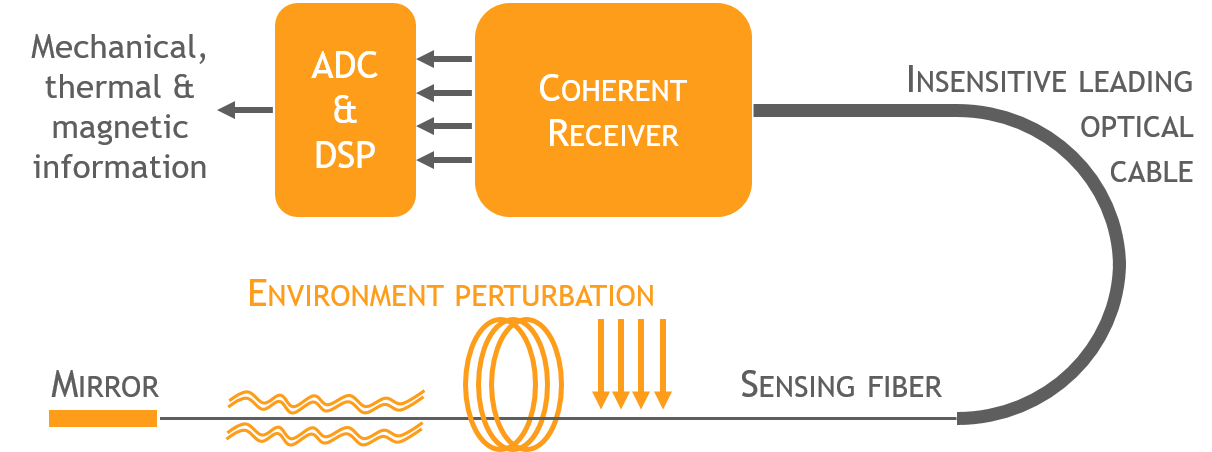In analogy with the evolution that Information Technologies is experimenting toward the concept of Software-Defined-Network, Cohaerentia proposes a new Software-Defined approach to fiber optic sensing.
In the Software-Defined fiber optic sensors (SDFOS) a merchant HW platform, comprising a standard optical fiber and a coherent measurement unit, is specialized by a proper digital signal processing (DSP) which enables custom-oriented applications. The fiber optic sensor becomes Software-Defined by the customer specific application.
Cohaerentia software-defined approach is enabled by the availability of a patented solution, called Synoptic sensor, based on coherent light detection technology and a novel use of standard optical fibers for multi-purpose and multi-domain data collection. The Synoptic sensor represents a low-cost, non-intrusive and easy to integrate sensor device where the entire length of the optical fiber is used as the sensing element of the whole structure, providing a distributed sensing functionality, with a monitoring capability over a wide frequency bandwidth (from 0 Hz up to MHz). The Synoptic sensor, with its minimal invasiveness, can simultaneously collect all the disturbances acting on the fiber including mechanical vibrations, structural deformations, component-wise temperatures and even magnetic and electric fields.
The extraction and separation of the different information carried by the optical signal is achieved through an innovative scheme of coherent detection associated with an ultrafast DSP. Depending on the monitoring needs only the DSP requires to be specialized and the recent availability off-the-shelf DSP boards has allowed Cohaerentia to develop a competitive solution for monitoring and diagnostics in sectors such as the manufacturing industry, over than the more traditional fields of application of fiber optical sensors.
Benefits of Cohaerentia fiber optic technology:
- Minimal invasiveness: the standard optical fibers have a diameter of 250mm. Any plastic protective coatings can lead to an overall diameter of about 2 mm.
- High mechanical strength and intrinsically resistant to corrosion.
- Immunity to electromagnetic interference.
- Remote measurement for hostile or difficult to access monitoring.
- Versatility: real-time monitoring of several parameters (temperature, vibration …) with the same fiber.
- Modularity: multiplexing of multiple optical fiber sensor with the same measurement unit.
- Broadband: monitoring of fast transients (eg. electrical discharges) and mechanical vibrations with acquisition bandwidth up to MSample/s.
The SDFOS is capable of real time monitoring of the following enviromental parameters:
- structural deformation (resolution: 1me, range ± 104me)
- mechanical vibration (bandwidth: 0-100kHz)
- sound and ultrasound
- temperature (resolution: 0.05°C, range ±200°C)
- pressure (resolution: 1 bar, range 0-1kbar)
- magnetic fields (resolution: 1 A, range up to kA)
- eletric fields (resolution: 50 V, range up to kV)



